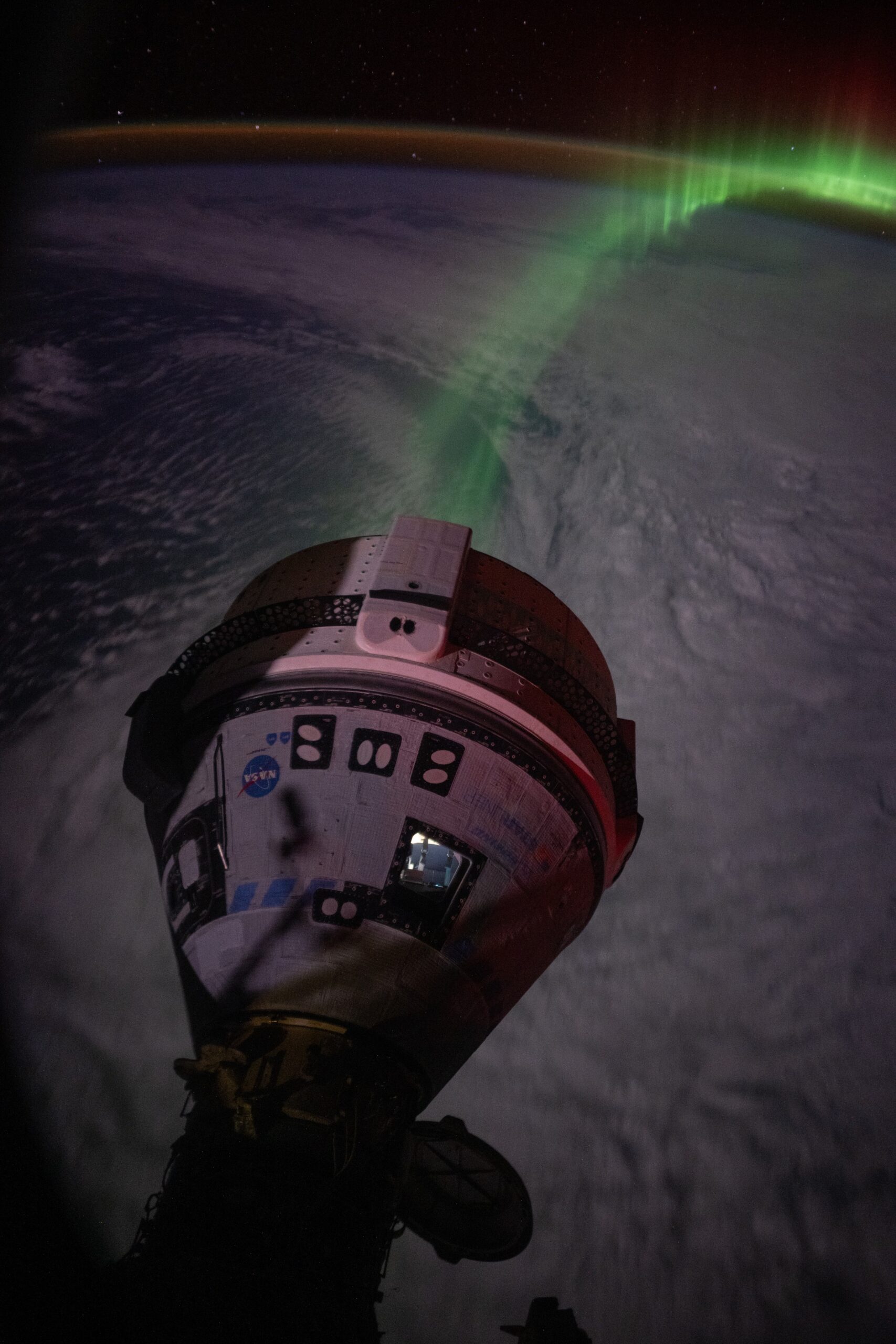An incredible timelapse shows a polar aurora-covered sky along with the Boeing Starliner spacecraft.

At the time of publication, Starliner was still docked to the International Space Station (ISS), where the crew was testing the capsule’s engines before returning to Earth. The docking problems occurred on June 6, when the astronauts were already on board. During another test, other astronauts aboard the SpaceX Dragon capsule recorded video of the green aurora that spread out beneath the Starliner.
“Starliner was doing some testing today, so we decided to check it out from the Dragon windows,” NASA astronaut Matthew Dominick wrote on social network X. The astronaut also shared a test video that showed the crew’s flashlights inside Starliner illuminating the interior of the spacecraft.
Timelapse video of aurora streaming behind Starliner taken from a Dragon window with Butch and Suni in the window of Starliner. Their flashlights light up the cabin.
— Matthew Dominick (@dominickmatthew) June 16, 2024
0.5 second interval, f 1.4, 6400 ISO, 1/4 second exposure, 24mm lens. pic.twitter.com/gZuxYZu0Af
Auroras occur when the Sun emits charged particles that interact with the Earth’s magnetic field. The particles glow and emit bright colors. The Sun is particularly active now as it reaches the peak of its 11-year cycle of activity, so these shows have become more frequently observed.
Protracted mission
Starliner is piloted by NASA veterans: astronauts Butch Wilmore and Suni Williams, former U.S. Navy test pilots. They emphasize that the mission is a training one to identify and fix major problems before Starliner is certified to provide regular missions to the ISS, which will not begin until 2025.
Due to engine testing and spacewalk planning, the one-week Crew Flight Test (CFT) mission has been delayed a few more days. During the extended mission, the crew will perform additional hatch operations to better understand how to operate the hatch and evaluate piloting using the forward window.
Starliner failures
Starliner and Dragon are two commercial spacecraft funded by NASA in 2014 to replace the Russian Soyuz. Both spacecraft were not expected to fly until 2017 at the earliest. However, technical and financial problems have delayed those plans. SpaceX sent its first astronauts in 2020 after a successful test mission without a crew. But Starliner launches were continually delayed.
The capsule’s first test flight to the ISS without a crew took place in 2019, but the spacecraft did not reach its destination due to computer glitches. Dozens of such problems and a coronavirus pandemic explosion in 2020 postponed the second autonomous flight until 2022. That test went as planned, but new problems arose, delaying the launch of a manned flight until 2023.
Eventually, after several postponements, problems with a helium leak and an inoperative engine, the spacecraft from Boeing finally made the flight with a crew to the ISS.
Earlier we told you all about the new spacecraft from Boeing.
According to space.com


